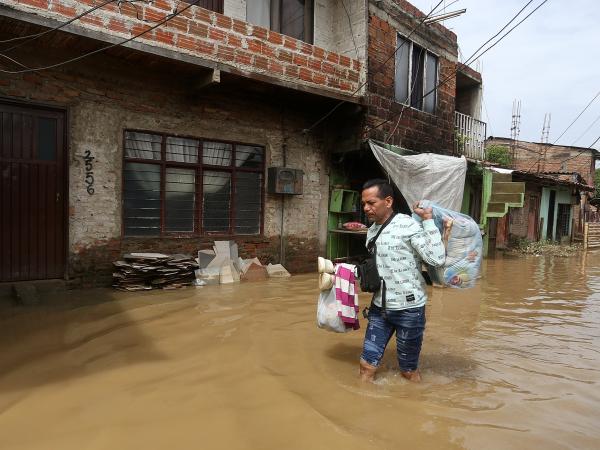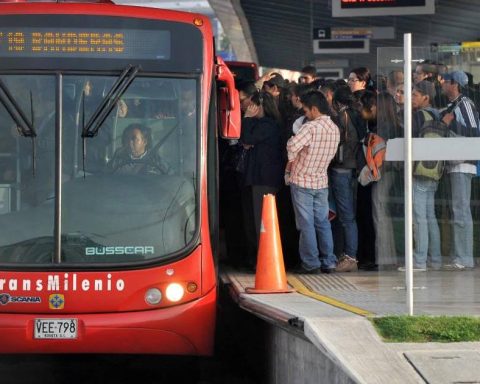The winter wave that has been unleashed in this month of November has been affecting the different regions of the country. By the phenomenon of ‘La Niña’, the season has been intensifying and according to the predictions of the Colombian Institute of Hydrology, Meteorology and Environmental Studies (Ideam), this situation could last until February 2023.
(New government measures to deal with the rain emergency).
According to data consolidated by the National Unit for Disaster Risk Management (Ungrd), the balance since the announcement of the rainy season and the ‘La Niña’ phenomenon indicates that “from August 1, 2021 to date and from November 1 to 13, 2022, 3,794 emergency events have been registered” in 32 departments and 881 municipalities with a total of 268 deaths, 61 disappearances and 721,755 affected people that make up 217,380 families.
For this, The entity assures that $2.1 trillion has been allocated from the Government, for reconstruction and rehabilitation of the areas affected by the disaster situation that the country is facing. In turn, President Gustavo Petro affirmed that “We are in an emergency, the resources have already been allocated. There has already been a transfer (…) to attend to the urgent, which is food, in the first place; health for affected people, and places to relocate in flood zones.”
The president also assured that this winter wave has been the largest in the last 40 years, where the indicators are higher than the 2010-2011 disaster, and there is also the probability that it will last until February, March or April. of 2023.
(Declaration of ‘disaster’ due to winter in the country: what will it do).
The general director of the Ungrd, Javier Pava Sanchez, stated that the municipalities are usually in charge of dealing with this type of emergency, however, 390 of them have been declared on red alert because they do not have the capacity to attend, which is why they have asked for national support.
“In 26 of the 32 departments, a public calamity has been declared. We have been attending to the situations, providing support. At this time, as far as the ‘La Niña’ phenomenon goes, more than $800,000 million have been invested. But the resources have not been enough. the official qualified.
In addition, according to a statement from the entity, an investment of more than $5,760 million was also made, to benefit nearly 200,000 families with food and non-food security, drinking water and material banks. Compared to the breakdown by departments highly affected by the rainy season, it is estimated that they are La Guajira, Atlántico, Bolívar, Magdalena, Cesar, Sucre, Córdoba, Caldas and Cauca.
In terms of infrastructure, the Ungrd ensures that there is a balance of 6,748 homes destroyed, 116,521 houses damaged, in addition to damage to 343 vehicular bridges, 241 pedestrian bridges, 471 aqueducts, 67 health centers, 457 educational centers, 170 community centers and in 28,162 hectares of land.
“Since the declaration of a disaster situation, 52 roads have been affected, six damaged bridges and one more collapsed”explains the entity.
Last Saturday, the municipality near Bogotá was affected by the overflow of three streams, the flooding of homes and swept away vehicles.
According to the mayor’s office of La Calera, a public calamity was declared due to the emergency, “to advance the actions in the response and recovery phase against the serious affectations and damages caused in the territory, by the action of natural events derived from the winter wave.”
In turn, the mayoress of the capital, Claudia López, stated that the census of trees at risk in the area has already been completed, where 123 were intervened and another 250 are missing.
While between this Wednesday and Thursday the work will be concentrated to enable the passage of the road to La Calera between Friday or Saturday.
(The effects that the harsh Ukrainian winter will have on the war).
For his part, Nicolás García, governor of Cundinamarca, assured that, “The decision was made to declare the manifest urgency in the department to be able to attend to 73 municipalities that generate some type of affectation due to the winter wave. In this way we will be able to access the purchase of elements for humanitarian aid and also for the more agile contracting of the hours of machinery that are needed to enable the tertiary roads of the department.
DIANA K. RODRIGUEZ T.















